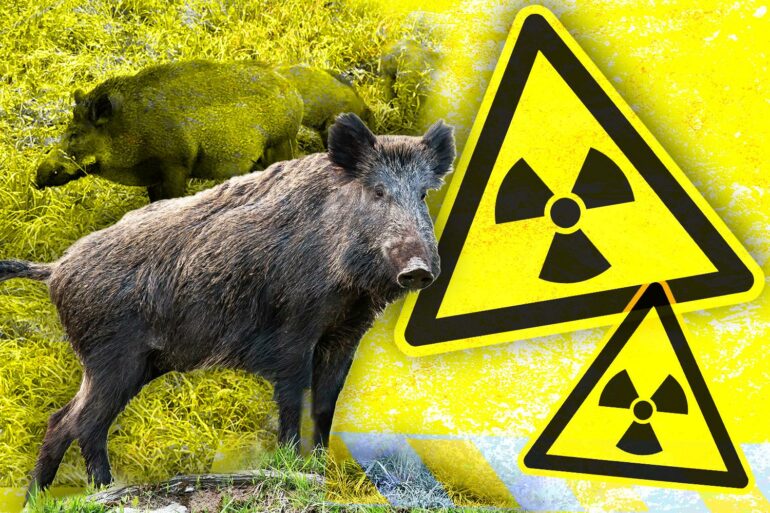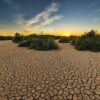Shaggy-haired, tusked pigs roam free in the woods of Germany and Austria. Although these game animals look fine, some contain radioactive cesium at levels that render their meat unsafe to eat.
Previously, scientists hypothesized that the contamination stemmed from the 1986 Chernobyl nuclear power plant accident. But now, researchers report in Environmental Science & Technology that nuclear weapon fallout from 60 to 80 years ago also contributes significantly to the wild boars’ persistent radioactivity.
Radioactive cesium, a byproduct of nuclear weapons explosions and nuclear energy production, poses risks to public health when it enters the environment. And the environment across Europe got a large pulse of radioactive cesium contamination following the Chernobyl power plant accident 37 years ago.
Most of that radioactivity originated from cesium-137, but a much longer-lived form, called cesium-135, can also be produced during nuclear fission.
Over time, cesium-137 has declined in most game animals, but wild boars’ radioactivity levels haven’t changed substantially. Their meat continues to exceed regulatory limits for consumption, in some places leading to less hunting and consequently contributing to the overpopulation of the animals in Europe. Because the radioactive cesium levels haven’t changed as expected, Georg Steinhauser, Bin Feng and colleagues wanted to investigate the amount and origin of that contamination in wild boars from Germany.
The researchers worked with hunters to collect wild boar meat from across Southern Germany and then measured the samples’ cesium-137 levels with a gamma-ray detector. To determine the origin of the radioactivity, the team compared the amount of cesium-135 to cesium-137 with a sophisticated mass spectrometer.
Previous studies showed that this ratio clearly indicates sources: A high ratio points to nuclear weapons explosions, whereas a low ratio implicates nuclear reactors.
The team observed that 88% of the 48 meat samples exceeded German regulatory limits for radioactive cesium in food. For the samples with elevated levels, the researchers calculated the ratios of cesium-135 to cesium-137, and found that nuclear weapons testing supplied between 10 and 68% of the contamination. And in some samples, the amount of cesium from weapons alone exceeded regulatory limits.
The researchers propose that the mid-20th century weapons tests were an underappreciated source of radioactive cesium to German soil, which was also unevenly impacted by the Chernobyl accident. Contamination from both sources have been taken up by the wild boars’ food, such as underground truffles, contributing to their persistent radioactivity.
The researchers say that future nuclear accidents or explosions could worsen these animals’ contamination, potentially impacting food safety for decades, as this study shows.
More information:
Disproportionately High Contributions of 60 Year Old Weapons-137Cs Explain the Persistence of Radioactive Contamination in Bavarian Wild Boars, Environmental Science & Technology (2023). DOI: 10.1021/acs.est.3c03565
Provided by
American Chemical Society
Citation:
Nuclear weapons tests found to contribute to persistent radioactivity in German wild boars (2023, August 30)



